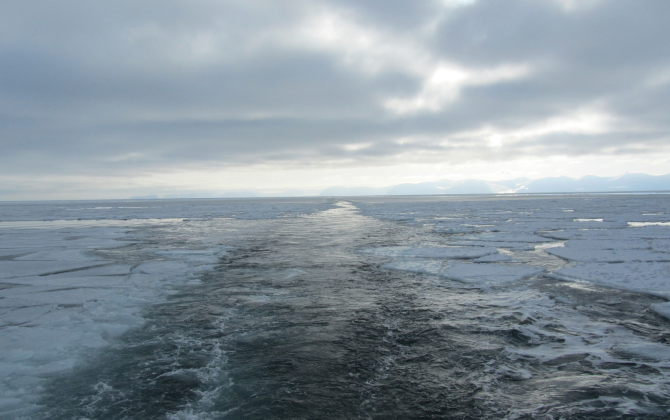Sea Ice Dynamics: The Role of Broken Ice in Multi-scale Deformation
To strengthen the coherence of experimental hydraulic research by improving the infrastructures to not only facilitate progress in the discipline but also better address climate change adaptation.

1 January 2017
(European Union Horizon 20-20 Project Hydralab HY+_HSVA-02)
Hydralab+ (http://hydralab.eu) is European Union 20-20 supported programme into “Adaptation for Climate Change”. The co-ordinated and integrated approach of HYDRALAB aims at structuring the access to unique and costly hydraulic and ice engineering research infrastructures in the European Research Area.
University College London, Institute for Risk and Disaster Reduction was successful in being awarded a project, “Sea Ice Dynamics: The Role of Broken Ice in Multi-scale Deformation” (Hydralab HY+_HSVA-02). The experiments will be done over a month in the HSVA, Hamburg Ship Model Basin.
The Challenge for the Research
As the Arctic warms, the extent of the Arctic Ocean sea ice cover is diminishing. But also the relative proportion of thick multi-year sea ice to thinner seasonal first-year sea ice is decreasing. The impact of the former will mean increased activity in the Arctic Ocean, particularly resource extraction and shipping (both freight and cruise liners), while posing challenges to indigenous people and to wildlife (Lishman, 2014). The impact of the latter will mean greater deformation of the sea ice cover as it is thinner, with generation of broken ice at all scales, which will influence the sea ice dynamics. Understanding the evolving sea ice thickness distribution and sea ice dynamics with on-going climate change is therefore crucial if the impacts of climate change are to be understood and adaptation strategies can be implemented.
Shear zones in the Arctic sea ice cover can be seen in Radarsat images as lineaments, often in sub-parallel sets (Kwok, 2001), of in-place sliding which may exert a strong control on the overall dynamics of Arctic sea ice cover (e.g., Hopkins, 1998; Sammonds et al., 2005; Schulson, 2004). Models of sea ice thickness are strongly dependent on the ratio of shear to compressive ice strength (Miller et al., 2005). Since shear deformation and slip is controlled by friction, a better understanding of the frictional behaviour is essential for a better understanding of overall Arctic sea ice dynamics. However, broken ice, acting like a fault gouge, can dramatically alter frictional properties (Scott et al., 1994). These may act at all scales (e.g., Marsan et al., 2004). Ice rubble is generated by Arctic vessels frequenting the same channel or as floes within a shear ice mass. At the local scale, accumulations of ice rubble provide resistance to repeated transits when it is both unconsolidated and consolidated (Mellor, 1980) and ultimately prevents transit through the channels. Understanding the frictional behavior and properties of consolidated rubble in this context could contribute to better management of these problems, and in future enable the use of Arctic shipping routes throughout the year. At the ocean scale, broken ice could exert a strong control on slip on cross-basin lineaments.
The frictional behaviour of saline ice sliding in direct contact has already been described by empirical adaptations of Amonton’s Law. Fortt and Schulson (2009) and Lishman et al., (2011, 2013) have developed rate and state laws to describe this behaviour, and Hatton et al. (2011) and Schulson and Fortt (2013) describe sliding in terms of ice micromechanics and thermodynamics. What is not known is how the presence of broken ice between the sliding surfaces affects friction, and our work aims to address this.
 Close
Close

